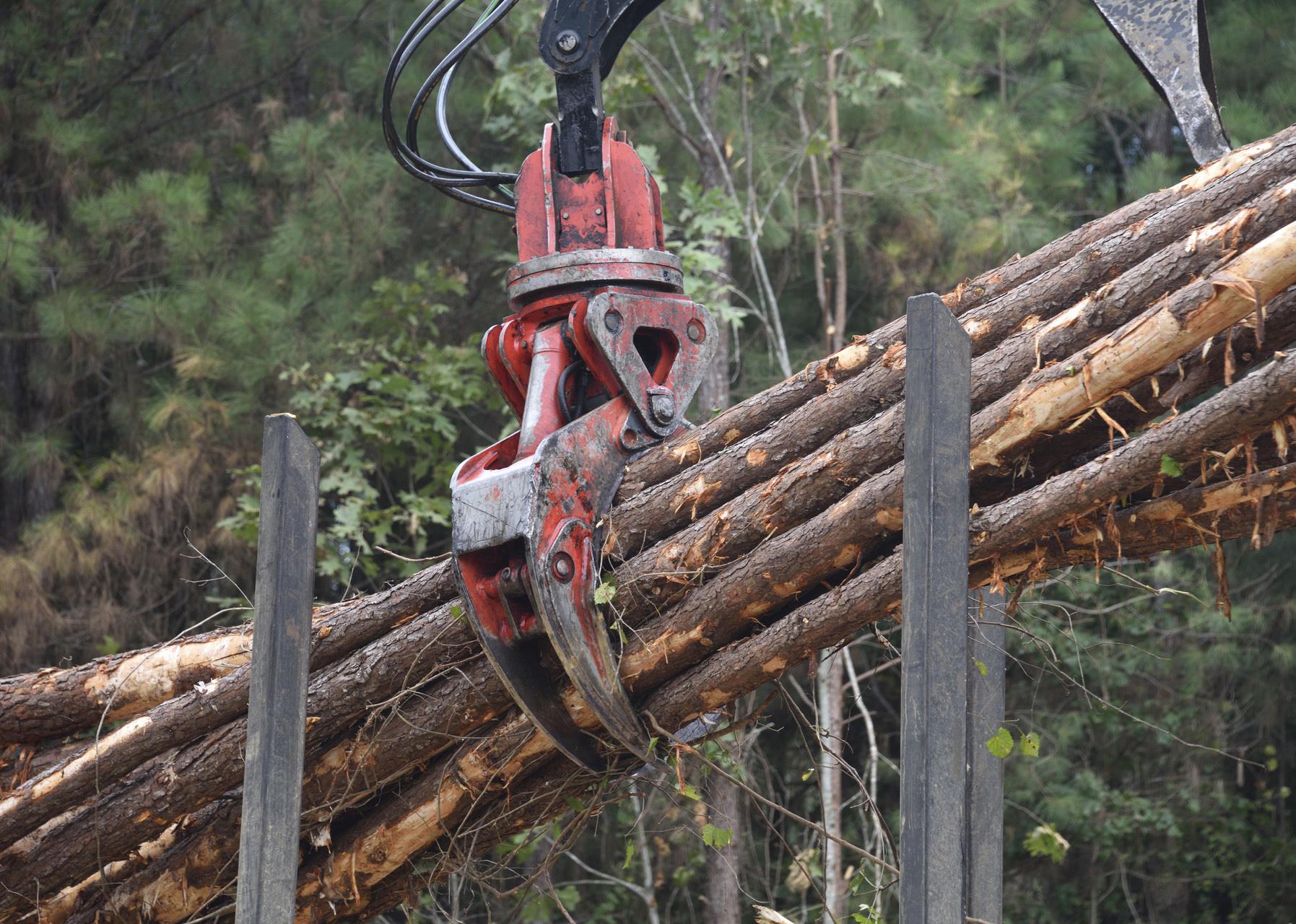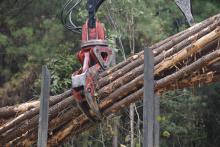Information Possibly Outdated
The information presented on this page was originally released on December 17, 2020. It may not be outdated, but please search our site for more current information. If you plan to quote or reference this information in a publication, please check with the Extension specialist or author before proceeding.
Miss. forestry industry weathers setbacks
STARKVILLE, Miss. -- Mississippi’s timber industry was not excused from market volatility due to COVID-19 this year, but its final value should land just short of where it was at the end of 2019.
Forestry dropped from the second to the third largest agricultural commodity in the state -- behind poultry and soybeans -- with an estimated value of $1.12 billion in 2020 compared to $1.15 billion a year ago. The estimated value of timber production is estimated by monthly severance taxes from the Mississippi Department of Revenue.
Before the pandemic, the year began with high housing starts and demand for wood products. Mills across the Southeast responded to expected reduced demand at the onset of COVID-19 in a variety of ways, but many scaled back production or temporarily closed.
“One of the things that drove prices up for finished products was the temporary supply gap we created by the mills that closed,” said Shaun Tanger, forestry economics specialist with the Mississippi State University Extension Service. “While some closed, there were other mills that kept going 100% and were working overtime. I know of a mill in the Carolinas that was down for six months.
“The decision to stay open or closed depended on two things: if it was part of a large corporation or an independent local mill; and how much risk upper management was willing to take,” he added.
There are nearly 70 mills statewide from small, independent local facilities to sites affiliated with large corporations.
“Local mills come in and out of business based on demand,” said John Auel, MSU Extension professor of forestry. “If they don’t have the capital investment that a large mill does, it’s easier for them to mothball their operation to ride out a lull because they don’t impact markets as much as larger ones.”
Plunging prices in March and April were quickly made up as manufacturers worked to replenish the scarce supply of paper products on grocery store shelves, namely toilet paper and paper towels.
Timber prices, however, will likely not recover to pre-COVID levels until 2021. Hardwood pulpwood, for example, had a statewide stumpage price of $3.87 per ton in the third quarter of 2020 compared to $6.24 a year before.
“We expect to see a buildup of pulpwood hardwood on the stump,” Tanger said. “Our oversupply of standing timber is keeping stumpage prices lower.”
Sawtimber prices reflect the rate of new home building. Third quarter stumpage prices this year for pine, oak and mixed hardwood sawtimber were down from that timeframe in 2019. The largest price gap between the two quarters was for oak sawtimber, which was $35.35 per ton in third quarter 2020, down from $44.60 per ton in third quarter 2019.
April saw a second setback as Easter Sunday tornadoes plowed through several areas of south Mississippi. More than 13,000 acres of forestland took a hit from the storms. The estimated damage was $15 million.
“The impact of the storms on the overall value was minimal, but to the affected landowners, an event like this is devastating,” Auel said. “The end product prices would have suffered more if damage occurred to a mill.”
A positive industry development is the construction of new mills and expansion of existing ones.
Enviva’s pellet mill in Lucedale is scheduled to launch in early 2021 and create 130 jobs. Mission Forest Products is bringing a new pine sawmill to Corinth with production likely beginning in 2022. Vicksburg Forest Products announced plans to double capacity, and Alternative Energy Development is expanding its Hazlehurst-based pellet mill.
“There is reason for landowners to be optimistic about the future. We have mills coming in to pick up the slack from others that have closed,” Auel said. “The energy sector is a great benefit to us. The more pellet mills we can put in to feed overseas markets, the better off everybody is going to be in Mississippi. We have the luxury of two deep-water ports in the Mississippi River and the Tennessee-Tombigbee Waterway, so we are uniquely positioned with those avenues to fill that market.”
As the new and expanded mills come online, quantities will begin moving more quickly, but landowners are mostly playing the long game in the interim.
“We’re still a decade or more away from prices like we had in the early 2000s and certainly the mid-2000s, but we should be patient and optimistic that the market is at least going to stay the same,” Tanger said. “If you look at timberland as an investment, you can still sell now and come out really well. It’s not like anybody is trapped in forestry. If they’re looking to cash in, land prices are really good for timberland right now. People want that property for hunting and fishing, so you are not being held captive by your land.”
For more information on forest economics, including timber price, taxation and marketing data, visit http://extension.msstate.edu/natural-resources/forestry/forest-economics.
EDITOR’S NOTE: Mississippi State University offices will close after Dec. 22 and reopen on Jan. 4. If you have any questions related to the year-end agriculture stories, please contact Keri Lewis, 662-251-2101, or keri.lewis@msstate.edu or Dr. Keith Coble, 662-352-9491 or coble@agecon.msstate.edu.






